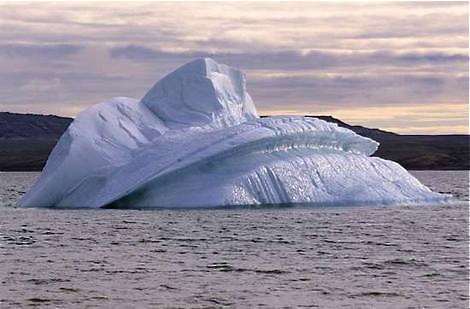Older Arctic sea ice replaced by young, thin ice
Not that this is as important as
the coming Super Bowl. Right?

A new study by University of Colorado at Boulder
researchers indicates older, multi-year sea ice in the Arctic is giving way to
younger, thinner ice, making it more susceptible to record summer sea-ice lows
like the one that occurred in 2007.
The team used satellite data going back to 1982 to reconstruct past Arctic sea ice conditions, concluding there has been a nearly complete loss of the oldest, thickest ice and that 58 percent of the remaining perennial ice is thin and only 2-to-3 years old, said the lead study author, Research Professor James Maslanik.
In the mid-1980s, only 35 percent of the sea ice was that young and that thin according to the study, the first to quantify the magnitude of the Arctic sea ice retreat using data on the age of the ice and its thickness, he said.
"This thinner, younger ice makes the Arctic much more susceptible to rapid melt," Maslanik said. "Our concern is that if the Arctic continues to get kicked hard enough toward one physical state, it becomes increasingly difficult to reestablish the sea ice conditions of 20 or 30 years ago."
A September 2007 study by CU-Boulder's National Snow and Ice Data Center indicated last year's average sea ice extent minimum was the lowest on record, shattering the previous September 2005 record by 23 percent. The minimum extent was lower than the previous record by about 1 million square miles -- an area about the size of Alaska and Texas combined.
Since this ain't happening in the backyard of American voters, I expect coverage from the Talking Heads of TV to be non-existent.
The team used satellite data going back to 1982 to reconstruct past Arctic sea ice conditions, concluding there has been a nearly complete loss of the oldest, thickest ice and that 58 percent of the remaining perennial ice is thin and only 2-to-3 years old, said the lead study author, Research Professor James Maslanik.
In the mid-1980s, only 35 percent of the sea ice was that young and that thin according to the study, the first to quantify the magnitude of the Arctic sea ice retreat using data on the age of the ice and its thickness, he said.
"This thinner, younger ice makes the Arctic much more susceptible to rapid melt," Maslanik said. "Our concern is that if the Arctic continues to get kicked hard enough toward one physical state, it becomes increasingly difficult to reestablish the sea ice conditions of 20 or 30 years ago."
A September 2007 study by CU-Boulder's National Snow and Ice Data Center indicated last year's average sea ice extent minimum was the lowest on record, shattering the previous September 2005 record by 23 percent. The minimum extent was lower than the previous record by about 1 million square miles -- an area about the size of Alaska and Texas combined.
Since this ain't happening in the backyard of American voters, I expect coverage from the Talking Heads of TV to be non-existent.
Posted: Mon - January 14, 2008 at 07:56 AM